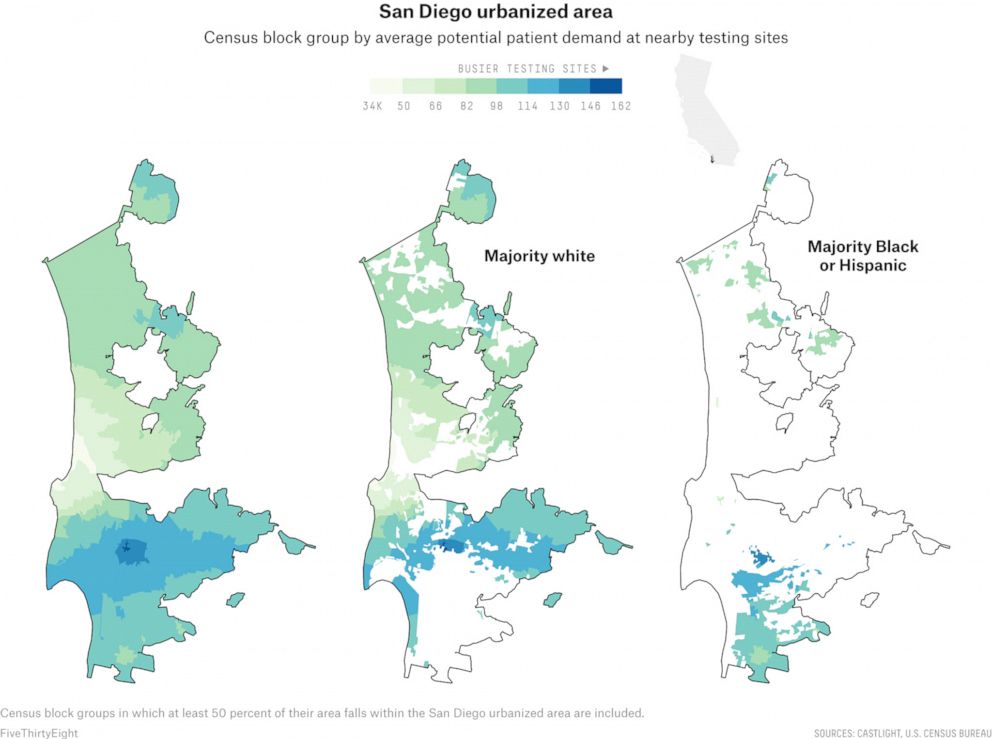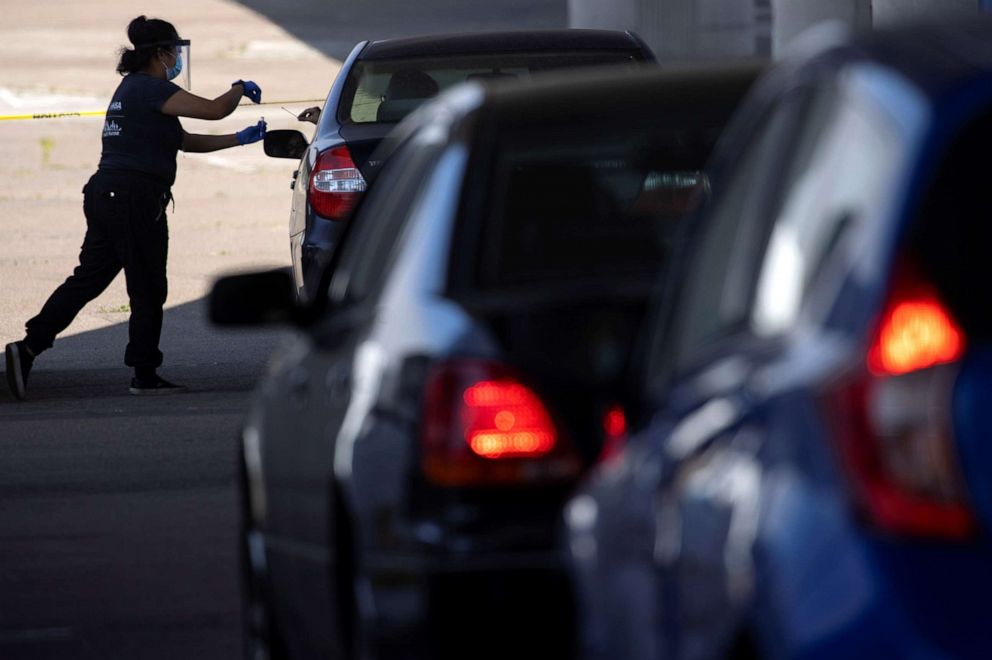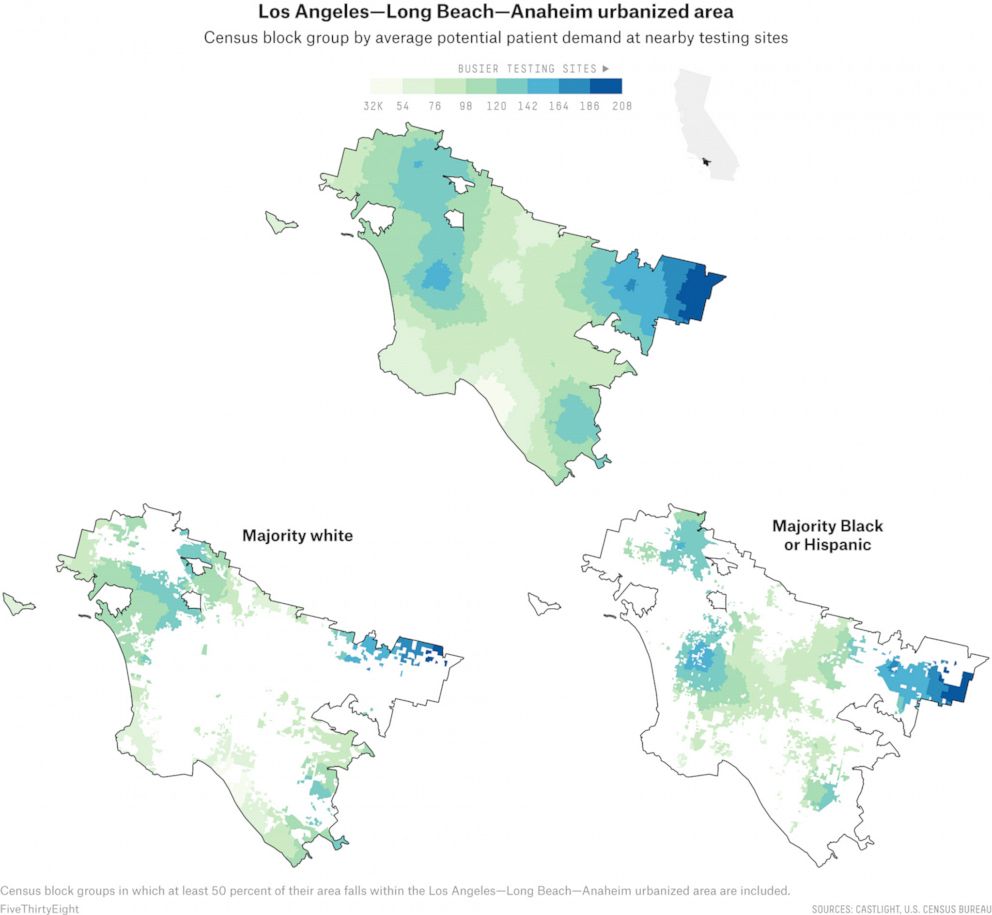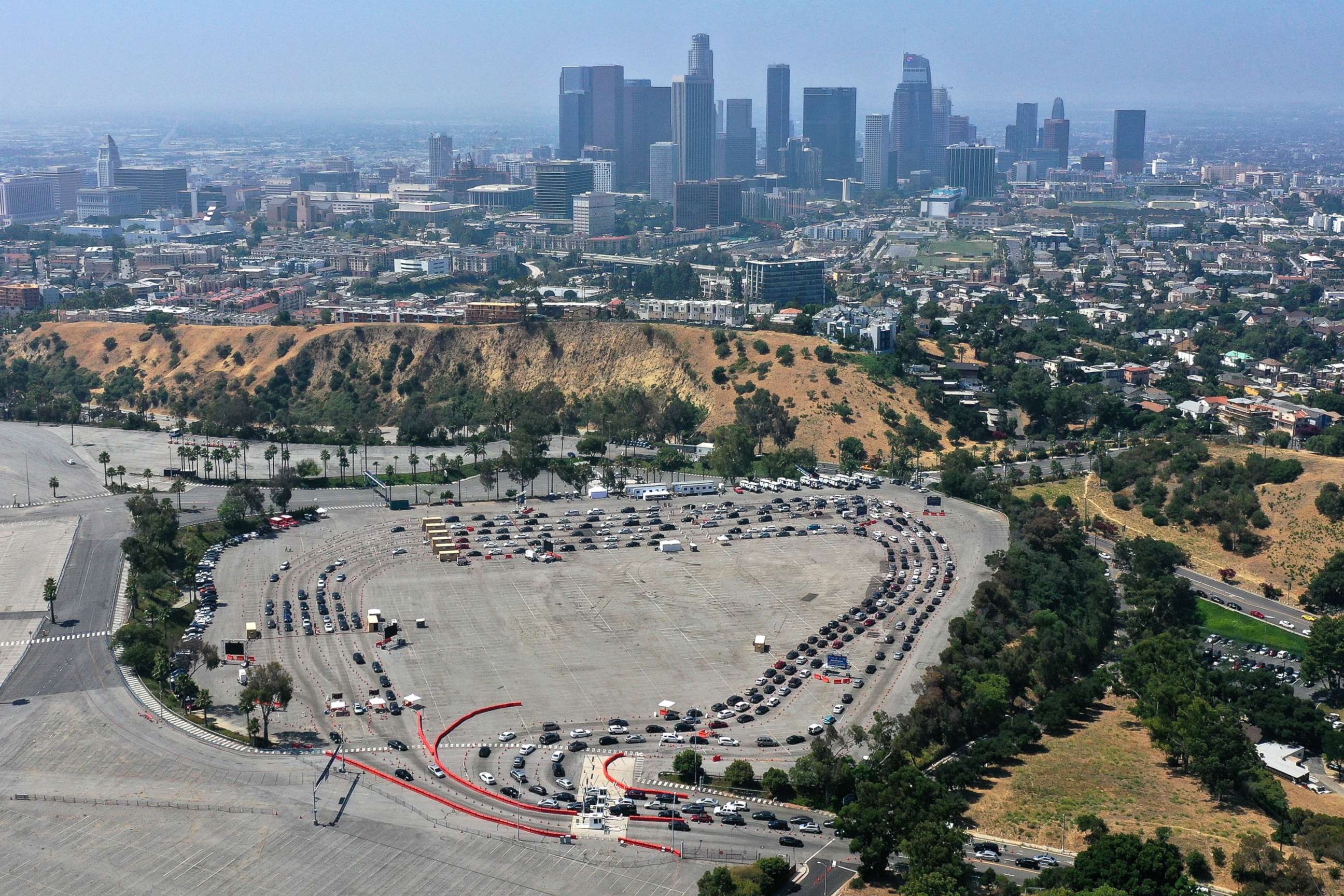Communities of color, lower-income San Diego and Los Angeles neighborhoods hit hardest by COVID-19 testing restrictions: ANALYSIS
Communities of color could suffer most from testing restrictions
After touting a massive expansion of testing and stable case counts earlier this summer, California has in recent weeks been rolling back on its earlier promise of easy access to testing for every resident.
Coronavirus hot spots in Southern California, in particular, are now putting back restrictions on community testing to prioritize symptomatic patients or those most at risk, such as nursing home residents and staff members.
According to a new, extensive review of testing sites by ABC News, FiveThirtyEight and ABC-owned television stations, sites in communities of color in many major cities face higher demand than sites in whiter or wealthier areas in those same cities. The result of this disparity is clear: People of color, especially Blacks and Latinos, are more likely to experience longer wait times and understaffed testing centers.
This nationwide review is one of the first to look at testing site locations coast to coast, in all 50 states plus Washington, D.C., using data provided by the health care navigation company Castlight Health (the same data that Google Maps uses to surface COVID-19 testing sites). An assessment of city and state health department websites also revealed, over and over, fewer testing sites in areas primarily inhabited by racial minorities.
Importantly, our analysis does not factor in the capacity of testing sites -- which can vary from just 50 tests at one site to 2,000 at another, meaning that one site might be equipped to serve a larger number of people than another site. Instead, it looks at the potential demand for each site based on the number of people and sites nearby. The data we used also is less likely to reflect tests done in private physicians’ offices than federally-funded community sites, local government-run mobile pop-up sites, urgent care clinics and hospitals. The analysis also doesn’t take into account other factors that could determine testing accessibility, such as staffing and wait times, as well as other restrictions on testing like appointment or insurance requirements.
Based on ABC News and FiveThirtyEight’s analysis and reporting, communities of color and lower income-level neighborhoods in the San Diego and Los Angeles urbanized areas — where some of the biggest gaps in potential community need were seen between majority-white and majority-Black neighborhoods — are expected to suffer the most from the testing restrictions.
According to our analysis of site locations in mid-June, in both the San Diego and Los Angeles areas, majority-Black neighborhoods were estimated to have around 30% higher potential need than majority-white neighborhoods.

In the San Diego urbanized area, much of which falls within the coastal section of San Diego County, many of the sites with lower potential patient demand are located in the predominantly white and wealthy neighborhoods along the northern part of the coast, while the sites expected to serve more people were all in the poorer, predominantly Black communities in the southern end of the city of San Diego.
Additionally, most of the community sites in San Diego County, which tend to be busier than private sites, are by appointment, county Health and Human Services Agency spokesperson Tim McClain said, and with the recent spike in cases people have had to make appointments a week or more in advance.
That was the case for Holly Young, who lives in La Mesa, a suburb just east of the city of San Diego. Young, 60, said she sought testing earlier this month after she discovered that her son and his girlfriend had been in contact with a COVID-positive friend prior to seeing her.
She said her health care provider was unable to test her because she didn’t show any symptoms, so she turned to a county testing site, for which she had to wait almost 10 days just to book an appointment and then drive an hour and 15 minutes to get to the site.
“I am in an essential industry, and part of my job is making the bank deposits, going to the post office and other routine tasks that were outside the business,” said Young, who is a self-employed accountant with clients in retail. “So even though I was always masked, I still felt very vulnerable. I'm overweight, take blood pressure medication and I smoked for 20 years, so I am not at all confident I would survive COVID-19.”

Young was tested on July 11, and told she’ll get her results in five to seven business days. But she went off a two-week self-quarantine last Thursday, meaning she had to return to work before getting her test results.
The disparity in access to tests hasn’t been lost on Young, who said she is on Obamacare and does not get health care from her job: “We all know people who just call their doctor and get a test the next day. It shouldn't be this way.”
McClain said San Diego County is exceeding state guidelines and offers widespread free and public testing access, but intends to do more to meet increasing public demand and reach deeper into at-risk communities. As of July 6, the county was surpassing the state goal of 4,950 daily tests -- 1.5 tests per day per every 1,000 residents -- by 56%.
“As tests became more widely available in spring, the county placed the greatest concentration of testing in our communities of diversity, and those near the border, and continues to bring more sites online,” McClain said. “Testing access is widely dispersed but we intend to make it more convenient with new locations, will add sites to address hotspots and will bring more no-appointment locations online.”
The Los Angeles area has also managed to at least narrow some of the disparities. The poorer urban centers of Los Angeles were estimated to have greater community need than the relatively wealthier suburbs outside the city, as well as in Pasadena, though to a lesser degree.
Since California Gov. Gavin Newsom announced an aggressive expansion of the statewide testing capacity back in late April, the state has also significantly ramped up testing in underserved communities, setting up close to 100 state-supported community sites in its communities of color and lower-income neighborhoods. According to our analysis, predominantly Asian communities actually had less potential demand than other groups, including white neighborhoods.

That expansion appears to have helped collapse testing disparities in the region, according to our analysis of testing data from the Los Angeles County Department of Public Health.
At the end of April, mostly white cities and communities in Los Angeles County had, on average, more than 1,200 tests completed per 100,000 people. That was more than 65% more completed tests than communities of color.
After Los Angeles Mayor Eric Garcetti announced free COVID-19 testing for everyone in the county and expanded testing operations, the number of tests administered tripled.

A month later, the racial testing gap had shrunk to just 24% between the most-white areas and the least white. About 6,200 tests per 100,000 people were completed in whiter areas and about 5,000 tests per 100,000 people in less white areas, according to the analysis of the city’s testing data.
There was a similar pattern in wealthier and poorer areas. At the end of April, people were tested at a rate 60% higher in areas where the median household income was in the top quartile versus the bottom quartile. But by May 31, that gap had shrunk to just 13%.
Since April, California has scaled up its statewide testing capacity from just 2,000 tests per day to more than 100,000 now, and has completed nearly 4.8 million tests since the pandemic began, the state’s health department spokesperson told ABC News and FiveThirtyEight.
As cases and hospitalizations hit new records in the past couple weeks, however, the state is again struggling with testing capacity. The governor late last week issued a new advisory to hospitals and labs, asking them to prioritize testing turnaround for individuals who are most at risk of spreading the virus to others, including those in nursing homes and congregate living settings.
The Castlight data analysis has helped shed light on the racial, ethnic and income disparities in the allocation of COVID-19 testing resources, and ABC News and FiveThirtyEight’s reporting shows how gaps created by systemic inequity in the health care system continue to persist even as states, cities and counties step up efforts to address them.
As cases rise and states across the country begin to face testing constraints, more local governments and private providers say they are considering going back to prioritizing testing access to symptomatic patients and those most at risk. In some places like Sacramento, testing sites are even closing because of supply shortages. This is expected to present additional strain on testing for underserved communities as state or county-sponsored public sites and labs further limit testing access.
“Our response to COVID is a reflection of the existing biases we have in our healthcare system,” said John Brownstein, the epidemiologist at Harvard Medical School. “While governments are trying to close the gap, we still have a long way to go to make sure Americans have equal access to testing resources.”
Laura Bronner is FiveThirtyEight's quantitative editor.
Grace Manthey, a data journalist for ABC Owned Television Stations in Los Angeles; John Kelly, the director of data journalism for ABC Owned Television Stations; ABC News’ Briana Stewart; and FiveThirtyEight’s Rachael Dottle contributed to this report.




